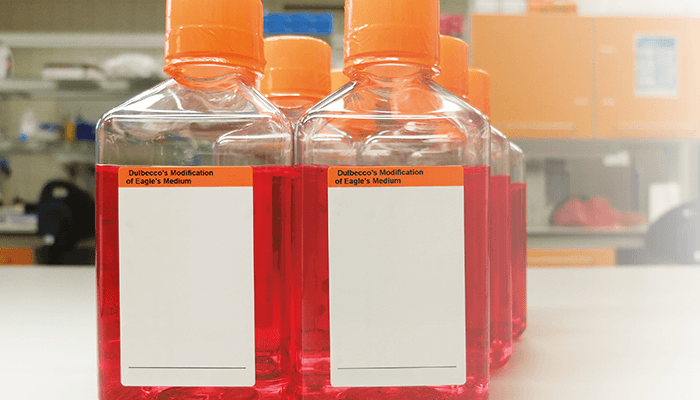
It goes without saying that the tissues of the eye are made of a variety of cell types, and each type benefits the others that share its home. For example, the eye’s glial, endothelial, and retinal ganglion cells all secrete chemicals that are beneficial to neurons and the retina. So why not look at using this cocktail of nice stuff to benefit the eye?
This is what researchers from Fundación Hospital de Jove in Asturias, Spain, have investigated – finding that cell medium conditioned by human uterine cervical stem cells (hUCESCs – think of a stem cell medium broth with the stem cells removed) actually regulates both oxidative stress and angiogenesis in retinal pigment epithelium (RPE) cells (1). The regenerative effects of stem cells are well known, so it stands to reason that the cocktail of secretions from these cells could have similar benefits in the retina.
Oxidative stress is a major contributor to the tissue damage and abnormal vascularization in a number of retinal diseases, including diabetic retinopathy, AMD, and uveitis. Using conditioned medium from hUCESCs to create an “energy drink” for RPE cells could offer the positive effects of stem cells without having to transplant tissue into the eye. Researching the secretome of hUCESCs to isolate biochemical pathways beneficial to the RPE could also open avenues for novel drug targets and even the repurposing of drugs for this purpose.
Energy drink for cells
For those who have never been in the lab, cell medium is what researchers feed their cells – hopefully keeping them happy and, in this case, providing proteins and chemicals that can help RPE cells in trouble. The majority of cell media are rich in glucose, salt, and all things needed for the maintenance and growth of hUCESCs. This sugary “energy drink” aimed at cells will often have phenol red in its mixture, enabling researchers to see pH changes in their cell-medium mix – but don’t be fooled by the cherry-like color; this “forbidden drink” should only be consumed by our cellular friends. The researchers create the conditioned medium used for their experiments by feeding hUCESCs for 48 hours before removing the cell medium with all its secreted goodies and treating the RPE cells. The hUCESCs themselves were obtained via cervical smears during routine gynecological checkups at the Fundación Hospital de Jove.
References
- N Eiro et al., Ophthalmic Res, [Online ahead of print] (2022). PMID: 35584686.
